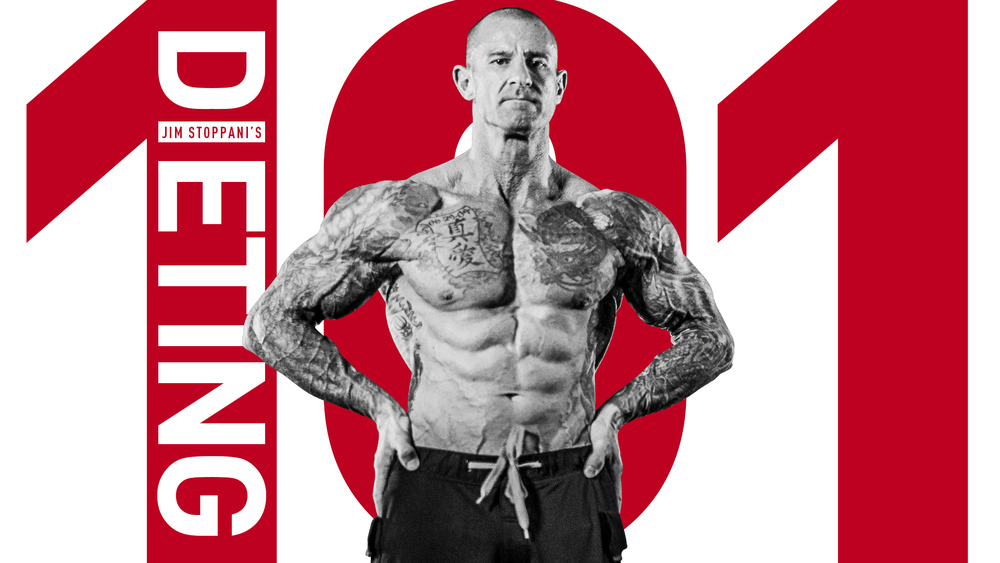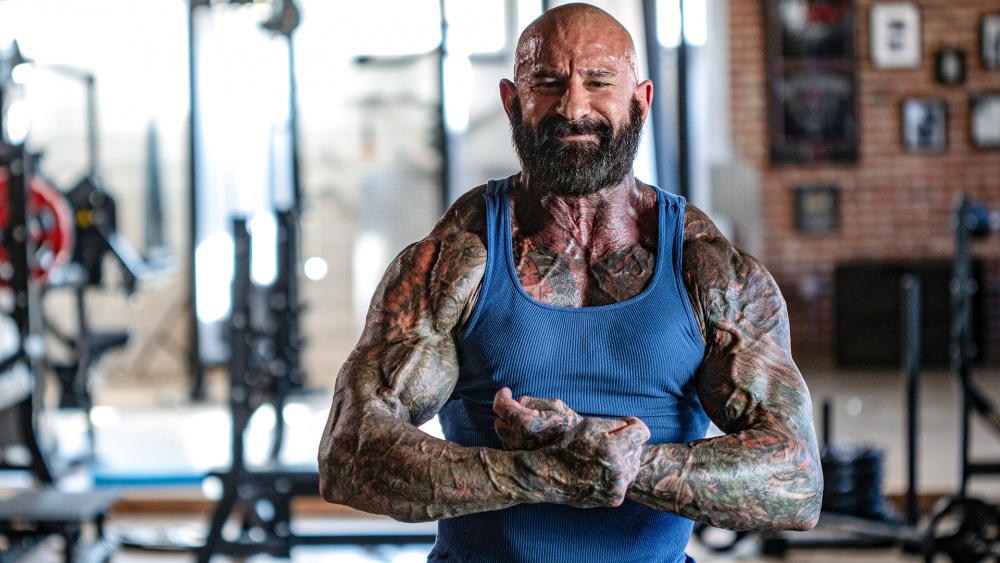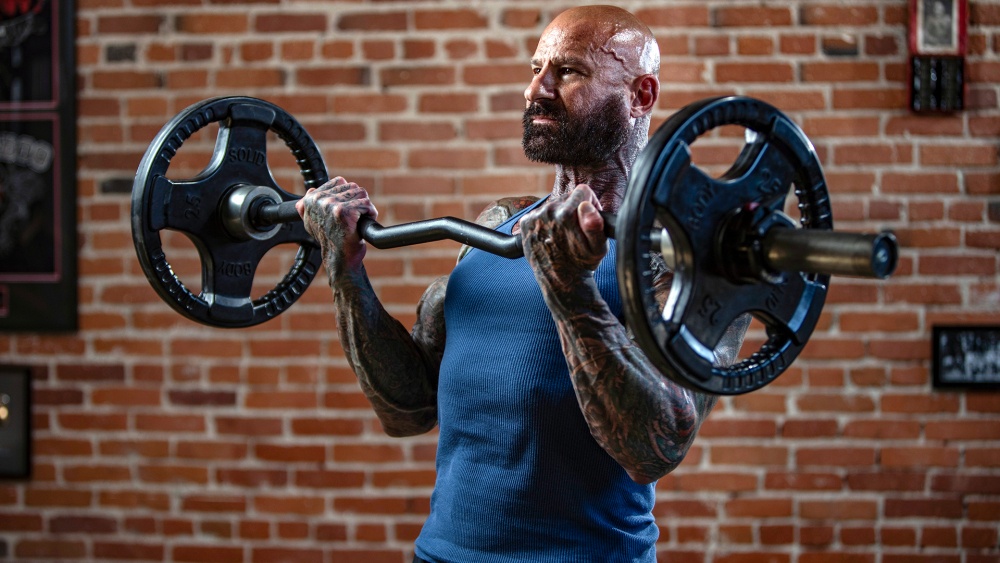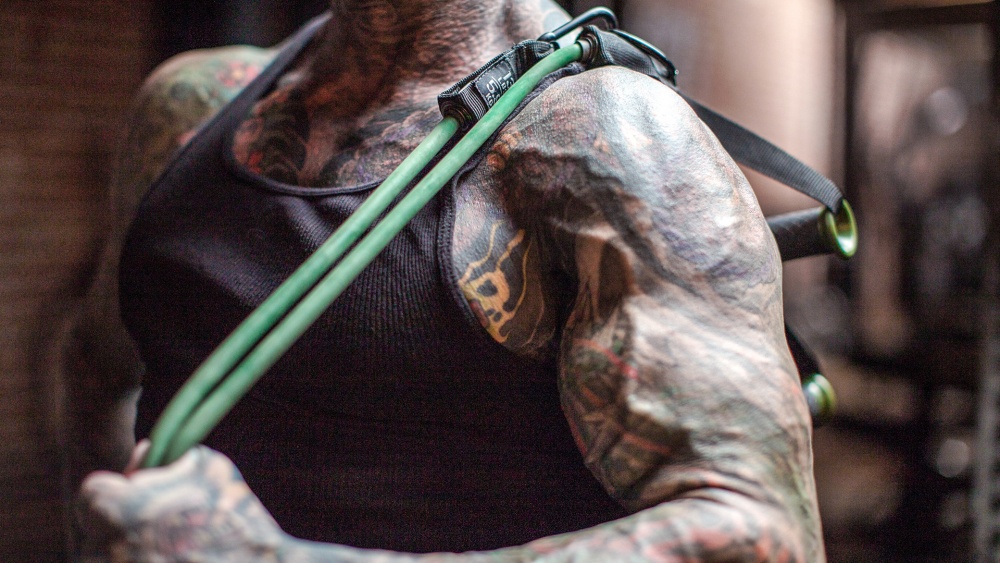These guidelines, ranging from training to nutrition, will help you develop a lean, muscular body.
By Joe Wuebben
Building muscle isn’t as complicated as many people make it out to be. It’s not always easy to do, but it’s fairly simple. In a nutshell, it comes down to overloading the muscles with resistance and consuming adequate macronutrients — and doing this consistently over time.
That last part can’t be overstated. If you want to build muscle and change your body, you’ve got to be dedicated. And you need to be of a mindset that you’re going to keep chipping away, day after day and month after month, assessing your progress as you go, and trying different things as needed. In other words, there’s some trial and error involved, since no two people’s bodies will react the same way to training and nutrition.
That said, there are some muscle-building truisms that apply to a vast majority of people. Below, we answer your most pressing questions when it comes to adding lean, dense muscle to your frame.
What is the best way to train for muscle growth?
The best way is through resistance training that works all the major muscles of the body using equipment including free weights (barbells, dumbbells, kettlebells), machines, resistance bands, and cables.
Volume should be relatively high, training each muscle group with anywhere from 10 to 20 sets per muscle group per week, and rep ranges should usually fall somewhere between 8 and 20 reps per set. These are very broad guidelines, and there are infinite ways to organize it all into a program. For examples of what a workout program might look like, check out Project X and HIIT 100. Keep in mind that both of these programs are highly advanced, so beginners shouldn’t attempt to do them as written. If you’re just starting out, try either the Beginner to Advanced program or Beginner Blueprint.
What are some good exercises for building muscle in specific areas, such as the chest or arms?
Generally speaking, you want to use exercises that stimulate the greatest amount of muscle fibers, so think of movements like bench press and incline press for the chest and curls for the biceps. When in doubt, opt for free weights (namely barbell and dumbbell moves) rather than machines to maximize muscle gains; however, you can build muscle with machines, cables, resistance bands, and even bodyweight exercises.
Compound, or multijoint, exercises typically stimulate the most muscle, so those should form the basis of your program when training for size. For example, a bench press is a compound exercise, whereas a chest flye is an isolation, or single-joint, move. With legs, squats and lunges are compound exercises; machine leg extensions and hamstring curls are isolation moves.
Keep in mind that there are many different variations for each basic movement — doing a given move with different types of equipment (mentioned in the previous paragraph), using different grips (overhand, underhand, neutral), putting your body at different angles (ie, incline, decline, standing, sitting), and so on.
Here’s a list of effective foundational exercises for each major muscle group:
Chest — flat and incline press with barbell, dumbbells, or machine; flat and incline flye with dumbbells, machine, cables, or resistance bands.
Back — bodyweight or weighted pull-ups; lat pulldowns; rows using a barbell, dumbbells, machine, cable, suspension trainer straps or gymnastics rings, or resistance bands.
Shoulders — shoulder/overhead press using a barbell, dumbbells, machine, cables, or resistance bands; lateral raises using dumbbells, cables, machine, or resistance bands; upright rows.
Legs — squats and lunges using a barbell, dumbbells, machine, or even bodyweight (for beginners); leg extensions and leg curls as assistance exercises.
Biceps — curls using a barbell, dumbbells, machine, cables, or resistance bands.
Triceps — standing or lying extensions using a barbell, dumbbells, machine, cables, or resistance bands; cable press down; dips; close-grip bench press.
Forearms — forearm curls and reverse curls using a barbell, dumbbells, machine, cables, or resistance bands.
Traps — shrugs using a barbell, dumbbells, machine, cables, or resistance bands.
Calves — standing or seated calf raises, typically using a machine.
How many times per week should I be lifting weights?
To build muscle, you’ll want to train in the gym at least three days per week, and even up to seven days a week. The sweet spot is somewhere between four and six days a week, depending on your training split (how you split up your workouts between body parts over the course of a week).
The important factors to consider are overload and recovery. You want to train often enough that the muscles are adequately stimulated to grow, but building muscle also requires sufficient recovery, so you don’t want to overdo it.
How much rest and recovery time do I need between workouts?
This depends on how you’re splitting up your training between muscle groups, how much volume and intensity you’re using in each workout, and how conditioned you are (how good of shape you’re in).
For example, if you do a low-volume full-body workout where each muscle group is only trained with three sets each, you can probably train one or two days later and be fine.
However, if you train, say, chest and triceps on a Monday with 20 and 15 sets performed, respectively, for each muscle group, you would want to wait at least 72 hours (if not more) before training those muscle groups again. However, you could train other muscle groups in the meantime — for example, back and triceps on Tuesday, and legs on Wednesday.
Over time, you’ll learn how to recognize how long it takes your muscles to recover; just going off how sore you are doesn’t always work. Generally speaking, depending on how much volume you trained a muscle with, you’ll want to rest anywhere between 24 hours up to a week between workouts of the same muscle group – 24 hours if you only did a few sets, and a week if you did over 20 sets for a muscle group.
How can I effectively track my progress in the gym?
There are a number of ways to go about this. You can track your workouts (and your progress) in a traditional journal with a pencil/pen and paper. Or you can track it digitally using a rudimentary spreadsheet or a more modern app on your phone.
Whatever method you choose, the key to tracking your progress is to be as thorough as possible. Write down (or type out) each exercise you do in every workout, and also list how many sets you did for each exercise, how many reps, and with how much weight. With all this data recorded for every workout, you can look back afterward and see if you’re getting stronger.
It’s also a good idea to track your body weight using a scale, your body fat percentage if possible, and specific body part measurements (ie, arm and leg circumference). Track these stats on a regular basis so that you can compare the progress to your gym workouts to see if there’s a correlation.
How important is nutrition (in building muscle) in bodybuilding?
Regardless of how hard you train, you can’t build muscle without the proper nutrition to fuel your body for workouts and support recovery. All three macronutrients (protein, carbs, fat) should be consumed to maximize muscle gains, and at proper amounts based on your body size and goals.
Nutrition is a vast field of study with many different things to consider. For a boiled-down list of guidelines to follow, read Dr. Stoppani’s Muscle-Building Nutrition Rules, where calories, protein, carbs, fat, supplements, and more are covered.
Protein is vitally important for maximizing muscle growth. Dr. Stoppani suggests consuming at least 1 gram of protein per pound of body weight per day (150 grams for a 150-pound individual), and preferably 1.5 grams per pound (225 grams of protein for a 150-pounder). This protein can come from any number of sources; see the next question and answer for a brief list.
Dietary fat is also important for gaining muscle – yes, even lean muscle. Dr. Stoppani recommends consuming roughly an equal proportion of polyunsaturated, monounsaturated, and even saturated fats. A general rule of thumb is to consume half of your body weight (in pounds) of fat; so, for a 200-pound person, that would be 100 grams of fat. Ideal sources of dietary fat include eggs, and fatty fish like salmon, avocados, nuts, and beef. The one type of fat to avoid at all costs is trans fat.
Carbohydrates are the most misunderstood of the three macronutrients. Should you avoid carbs? No, you shouldn’t, whether your goal is to build muscle is to lose fat. You definitely want to make sure not to consume too many carbs if you want to be lean, but Dr. Stoppani still recommends a starting point of 1.5 to 2.0 grams of carbs per pound of body weight per day; if you weigh 150 pounds, that would be 225 to 300 grams of carbs per day. But as just mentioned, this is a starting point. Depending on your results, you may want to decrease that amount if you find you’re gaining body fat, or increase it if you’re not gaining fat and muscle growth is stalling.
As for calories, that number will work itself out as you dial in the aforementioned macronutrients (protein, fat, carbs). “Calories in, calories out” matters, but not all calories are created equal, so focus more on your macros than total calories.
What are some good sources of protein for muscle building?
High-quality protein sources for building muscle include beef, chicken, turkey, pork, eggs, dairy (milk, yogurt), and protein powder (whey and casein).
How can I prevent injuries while lifting weights?
This is an important question to be mindful of, and unfortunately, there’s not a one-size-fits-all answer to it.
First off, you should always aim to use proper form in weight-lifting exercises. This varies depending on the movement, so always be a student of the craft — watching videos and tutorials online, asking more experienced lifters at the gym to watch your form, and also taking notes in your journal of how exercises feel.
Listen to your body. If there’s a pain in a joint, that’s usually a sign that your form is less than perfect. Whereas feeling your muscles “burn” at the end of a set is usually an acceptable form discomfort. You should always be monitoring how your body feels both during workouts and outside the gym. Injuries can occur quickly (acutely) or over time (overuse). Nobody knows your body better than you, so always be mindful of how you feel and back off on volume, resistance (heavy vs. light), and intensity as needed.
If you ever have any injury concerns, consult a qualified sports medicine physician or another qualified healthcare practitioner.
How can I break through a plateau and continue making progress in the gym?
Plateaus happen to everyone, and the solution to them can vary from person to person and situation to situation. Variety is one thing that will help you avoid and push through plateaus since your body will adapt to the same workout done repetitively and become stagnant over time.
Variety can come in many different forms. All of these variables, and more, should be changed on a regular basis: volume (number of sets performed), reps (high reps, low reps, and everything in between), weight, frequency (number of days trained per week), training split, exercises, equipment.
Oftentimes a plateau will occur in a specific muscle group – for example, the calves, which are a stubborn body part for a lot of people. Biceps, triceps, deltoids (shoulders), quads, and lats are other muscle groups that can plateau.
When a particular muscle group won’t grow, a good place to start is adding more volume (more total sets performed) to that muscle group. For example, if you’re accustomed to doing two exercises for a body part, three sets each (6 total sets), and that body part is plateauing, increase volume to three exercises and four sets for a total of 12 sets.
Aside from adding volume, introducing intensity techniques to “shock” a stubborn muscle group into growing is another approach you’ll likely need to take eventually. Good intensity techniques for addressing a plateau include drop sets, compound sets, tri-sets, giant sets, rest pauses, and forced reps.
How do genetics affect muscle-building potential?
Genetics often go hand in hand with the earlier discussion regarding plateaus in specific muscle groups. For example, you may genetically have small calves, or maybe skinny legs is something you “inherited” from a family member.
You also genetically have a certain body type, which could affect your ability to build muscle (or lose fat). There are three broad body types – ectomorph (skinny), mesomorph (muscular), and endomorph (heavy set, higher amount of body fat) – and these are determined by your genetics. Many people fall somewhere between these body types; for example, a cross between an endomorph and a mesomorph.
Where muscle building is concerned, mesomorphs typically have the easiest time gaining muscle as compared to the other two types, and ectomorphs have the hardest. For the latter, we’re talking about the really skinny guy who can’t seem to add muscle no matter how hard he tries. The former would be the guy who’s always been big, strong, and lean and seems to grow muscle simply by looking at a dumbbell.
Genetics plays a role in how much muscle you’ll ultimately be able to gain, but a larger factor will be your work ethic and how you progress and change your workouts over time. Suppose you’re consistent in your training and nutrition over a long period of time and continue to look for new ways to make results. In that case, your potential is essentially limitless (within reason). In other words, don’t resign yourself to not being able to gain muscle just because you’re naturally skinny (an ectomorph).
Don’t let “poor genetics” be an excuse for not achieving your goals. Be realistic while also setting your sites high and continuing to plug away at building muscle.
Related Articles














